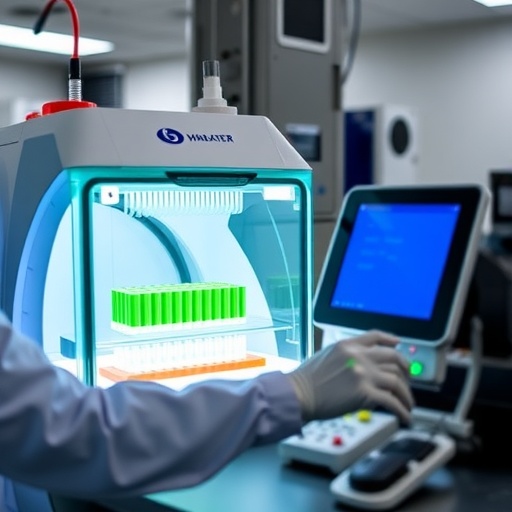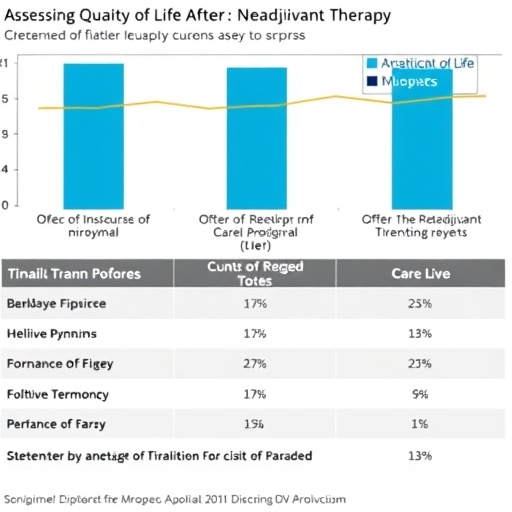In a groundbreaking advancement poised to revolutionize immunology and therapeutic development, researchers at the University of Illinois Urbana-Champaign have unveiled a cutting-edge high-throughput platform called oPool+ display. This innovative technology enables the simultaneous synthesis and functional assessment of hundreds of antibodies against viral antigens, dramatically accelerating the process of antibody discovery and characterization. At the core of their study lies influenza hemagglutinin, a vital viral surface protein instrumental in host cell entry and a prominent target for vaccine and therapeutic design. Utilizing oPool+, the team has systematically charted the binding landscapes of a vast repertoire of native antibody pairs, shedding light on conserved features that underpin broad immune responses across diverse individuals.
Antibodies represent one of the most intricate and vital components of the adaptive immune system. Traditionally, research and development involving antibodies have been hampered by the laborious and time-intensive nature of individually generating, expressing, and characterizing these biomolecules. Given the immune system’s capacity to create trillions of unique antibody variants, the conventional one-at-a-time approach severely limits throughput and scale. The oPool+ platform directly addresses this limitation by integrating advances in high-volume DNA synthesis, yeast display technologies, and multiplexed binding analysis, thereby compressing weeks or months of work into mere days.
The scientific team, led by Professor Nicholas Wu, recognized the imperative need to overcome the bottlenecks in antibody research, particularly in the context of rapidly evolving pathogens like influenza viruses. Influenza hemagglutinin (HA) is a dynamic antigen with frequent mutations enabling immune escape, challenging vaccine efficacy across seasons and populations. To reflect the diverse human immune response, the researchers curated a comprehensive antibody library encompassing approximately 300 native antibody variants drawn from multiple human subjects. This native pairing preserves natural heavy and light chain configurations, which is critical for authentic binding specificity and affinity.
In essence, the oPool+ display method operates by synthesizing antibody genes en masse and displaying the resulting proteins on the surface of yeast cells. This yeast display system serves as a versatile platform for measuring antibody-antigen interactions via flow cytometry, allowing discrimination of subtle differences in binding strength and specificity. Importantly, the researchers also synthesized a library of hemagglutinin variants, representing common mutations observed in the influenza virus. By systematically cross-testing hundreds of antibodies against multiple HA variants, the team generated a multidimensional binding matrix cataloging thousands of interactions.
This massive dataset empowers the identification of antibody features common to many individuals, a key step in designing universal vaccines or broadly neutralizing therapies. For example, the group discovered shared binding motifs and structural epitopes that remain conserved despite the mutational diversity of hemagglutinin. Such insights can guide rational vaccine design efforts to evoke more universally protective immunity, transcending individual variability in antibody repertoires. The ability to rapidly characterize these interactions at scale opens new avenues for confronting antigenic drift and viral evolution.
From a technical standpoint, the oPool+ platform delivers marked efficiency and cost-effectiveness. Wu emphasizes that this method reduces supply and material costs by as much as 80 to 90 percent compared to traditional approaches, without compromising data quality or accuracy. The dramatic cut in resource expenditure coupled with rapid turnaround times enables iterative cycles of antibody discovery and optimization that were previously impractical. Researchers can now ask more complex biological questions at a much larger scale, deepening our understanding of immune diversity and molecular recognition principles.
In the context of therapeutic antibody discovery, this platform has transformative potential. Presently, over 150 FDA-approved antibody therapeutics target diverse diseases ranging from cancer to autoimmune disorders. However, the early stages of candidate screening often rely on laborious, low-throughput methods. With oPool+, candidate antibodies exhibiting high affinity and favorable specificity profiles against target antigens can be flagged en masse, fast-tracking their development pipeline. This may shorten the time from bench to bedside, increasing the availability of precision therapeutics tailored to emergent diseases.
Furthermore, the Wisconsin team anticipates that oPool+ can be generalized beyond influenza to characterize antibody responses against an array of pathogens including other viruses, bacteria, and even tumor-associated antigens. The modular nature of the platform facilitates the rapid creation of custom antibody and antigen libraries tailored to new infectious agents or disease markers. This capability is monumental in the face of unexpected pathogen outbreaks, akin to the COVID-19 pandemic, allowing swift scientific mobilization to identify promising antibody therapeutics or inform vaccine strategies.
An exciting frontier connected to this work lies in the integration of artificial intelligence and machine learning with high-throughput experimental data. Currently, computational models predicting antibody structures and antigen binding are burgeoning but limited by paucity of robust experimental validation. The oPool+ platform is ideally suited to rigorously test and refine these AI predictions by experimentally validating thousands of antibody-antigen interactions in real time. This feedback loop will enable continual enhancement of predictive algorithms and accelerate antibody engineering efforts informed by artificial intelligence.
The oPool+ method signifies a major leap forward in our capacity to decode the complex antibody landscapes elicited by infection or vaccination. By bridging high-throughput experimental biology with computational modeling and synthetic biology technologies, this platform stands to redefine antibody research paradigms. It offers a scalable, cost-efficient, and detailed lens through which researchers can explore the diversity and specificity of immune responses at an unprecedented level of granularity.
Financial support for this pioneering work derives from prominent U.S. funding bodies, including the National Institutes of Health, the Searle Scholars Program, and the Howard Hughes Medical Institute’s Emerging Pathogens Initiative. This underscores the wide-reaching biomedical and public health relevance of deploying versatile platforms like oPool+ to tackle infectious threats.
Moving forward, the Illinois team plans to scale the antibody libraries from hundreds to thousands or tens of thousands, further amplifying the depth and breadth of antibody characterization possible. Their vision encompasses not only acceleration of vaccine and therapeutic discovery but also the establishment of comprehensive antibody atlases spanning populations and diseases. Such atlases could transform personalized medicine, enabling tailored immunotherapies informed by a patient’s unique antibody repertoire.
In summary, the emergence of oPool+ display technology heralds a new era in antibody research—one characterized by speed, scale, and precision. By enabling extensive parallel synthesis and functional analysis of native antibody pairs, this platform unlocks previously infeasible avenues of exploration and application. Its impact is likely to resonate across immunology, infectious disease research, biotechnology, and beyond, shaping the future of how human antibody responses are understood and harnessed for therapeutic innovation.
Subject of Research: Antibody Discovery and Characterization Against Influenza Hemagglutinin Using High-Throughput oPool+ Display
Article Title: High-throughput synthesis and specificity characterization of natively paired influenza hemagglutinin antibodies with oPool+ display
News Publication Date: 3-Sep-2025
Web References:
https://www.science.org/doi/10.1126/scitranslmed.adt4147
References:
Wu N, Ouyang W, et al. High-throughput synthesis and specificity characterization of natively paired influenza hemagglutinin antibodies with oPool+ display. Science Translational Medicine. 2025. DOI: 10.1126/scitranslmed.adt4147
Image Credits: Owen Ouyang
Keywords: antibody discovery, high-throughput screening, influenza hemagglutinin, yeast display, antibody-antigen interactions, vaccine development, immune repertoire, synthetic biology, artificial intelligence, therapeutic antibodies
Tags: adaptive immune system componentsantibody discovery accelerationbroad immune responses mappingDNA synthesis advancementshigh-throughput antibody testinginfluenza hemagglutinin researchinnovative platforms in disease researchmultiplexed binding analysis methodsoPool+ display technologytherapeutic development in immunologyviral antigen characterizationyeast display technologies in research





